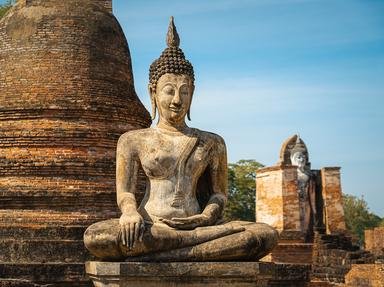Quiz Answer Key and Fun Facts
1. The whole of the Terracotta Army was moved from its original location into a larger museum that could fit the huge collection of statues.
2. This posthumous depiction is of the first emperor of China, who unified sections of the Great Wall and was buried with the Terracotta Army. He was a member of what short-lived dynasty?
3. The terracotta statues are located in Xi'an (pictured), which was one of the Four Great Ancient Capitals of China. Three of the cities below make up the other great historical capitals. Which one does NOT?
4. All of the warriors' faces in the Terracotta Army are identical.
5. Here is a replica of what the terracotta figures might have looked like before their paint faded with time. In terms of the pigments used on the statues, which pigment is INCORRECTLY matched with its source?
6. While being made, the individual pieces of the statues were fused together using a mixture of just water and clay.
7. Pictured is a replica of one of the many different types of warriors that were crafted. Which of these types of soldiers were NOT represented within the Terracotta Army?
8. Take a closer look at these warriors' hands as they seem to be missing something. According to the "Smithsonian Magazine," upon excavation, why did the large majority of warriors not have the bronze weapons that they'd originally held?
9. Approximately how many horses do archaeologists think were buried along with the terracotta warriors?
10. After reading an historical account in which the emperor's tomb contained vast riches, archaeologists immediately began work on excavating the tomb in 1974.
Source: Author
trident
This quiz was reviewed by FunTrivia editor
stedman before going online.
Any errors found in FunTrivia content are routinely corrected through our feedback system.
